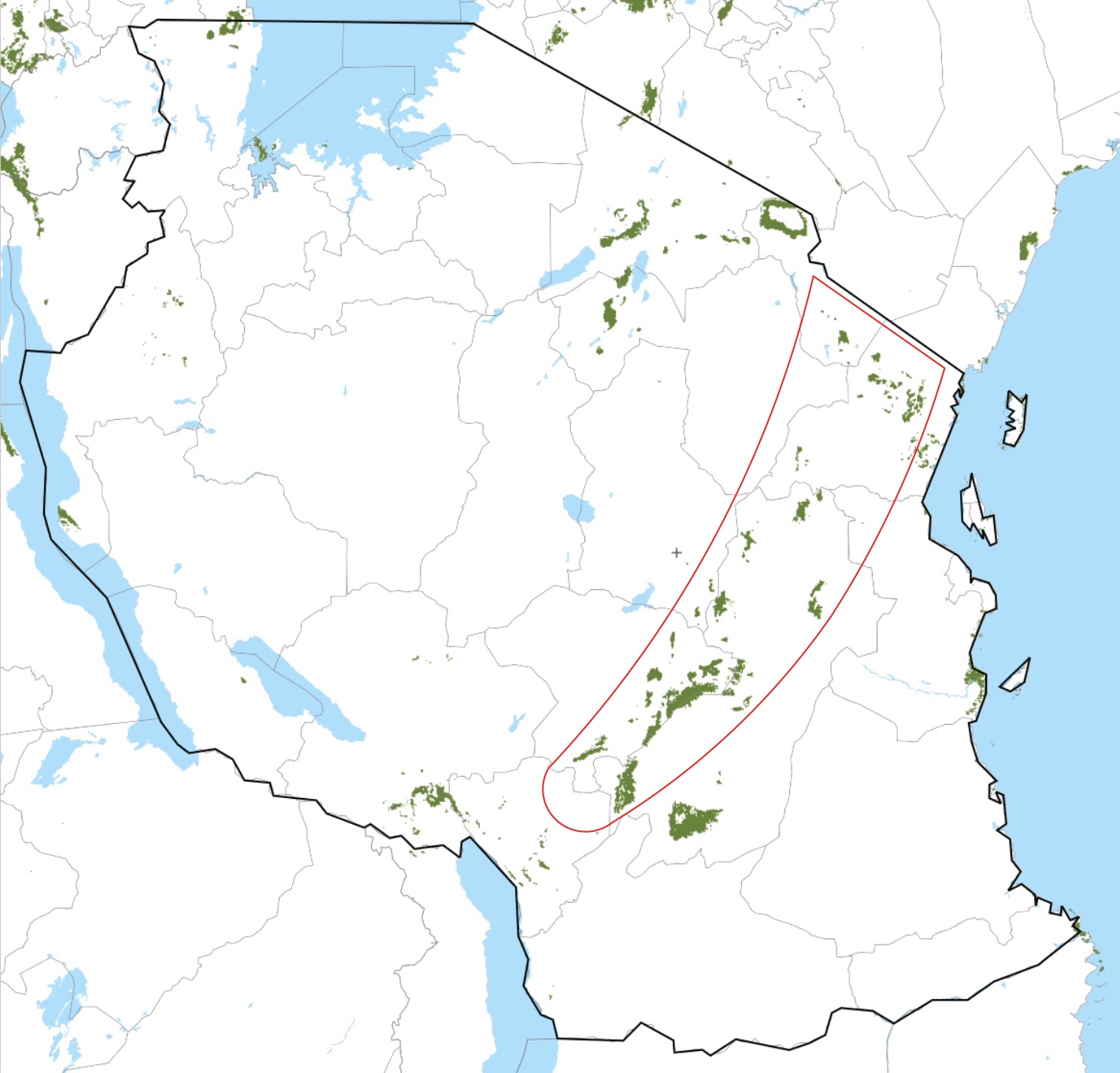Where to intervene:
Wherever habitat conversion is reversible (e.g. land that doesn’t have a permanent human settlement established on it) with a special focus around fragmented and isolated Protected Areas, ideally establishing wildlife corridors and ‘stepping stones’.
Legal framework:
Proposed financing mechanisms will be established under the country’s current legal system. Areas involved in restoration initiatives may acquire, when not already existing, protected area status of various types, such as Village Forest Reserve. In particular PAMS has identified Wildlife Management Areas, which are areas of communal land set aside as exclusive habitat for wildlife by member villages, as the ideal legal framework in which to work in the long term as it combines conservation with possible revenue models of various types. Where applicable, similar entities will be identified in other countries (e.g. Wildlife Conservancies in Kenya, etc.).
Financial sustainability model:
The PAMS approach to sustainably managing the restored areas is based on monetizing the restoration and long-term protection of natural capital. This is a new approach that could solve many of the shortcomings of previous strategies for long-term conservation of the WMAs and also allows action to be taken on private, village and government land, in the latter case improving the sustainability perspectives of existing protected areas. This new strategy offers individuals and communities the opportunity to earn a living under a without extracting resources from the environment and therefore lowers the risk of species extinction and offers numerous other nature-based benefits for society at a global level.
The valuation and monetization of natural capital makes use of recognized standards (like Voluntary Emission Reduction and Verified Carbon Standard for eg). The process will mainly make use of two different certifications: Verra’s Verified Carbon Standard and the Community, Climate, Biodiversity Standard (CCB). These standards help to identify projects that simultaneously address climate change, support local communities and smallholders, and conserve biodiversity.
The CCB program promotes excellence and innovation from the earliest stages of project design and development through implementation.
The CCB Standards criteria ensure that projects:
• Identify all stakeholders and ensure their full and effective participation
• Recognize and respect customary and statutory rights
• Obtain free, prior and informed consent
• Assess and monitor direct and indirect costs, benefits and risks
• Identify and maintain high conservation values
• Demonstrate net positive climate, community and biodiversity benefits
Individual payments:
These are implemented through the Myplanet.green conditional payment system which allows donors to reward individuals on the ground and create new categories of nature-based jobs for local community members.
Monitoring & Evaluation
While Verra’s standards and certification system can be applied to all types of land management project, including reforestation, afforestation, revegetation, forest restoration, agroforestry, sustainable agriculture, and other land management.
The Myplanet platform allows us to constantly measure the outputs and outcomes of the activities implemented by the individuals involved in the projects and to remunerate them on the basis of the results obtained, organized in monthly milestones:
1. Activity Outputs: to determine whether actions are being executed according to schedule and budget, and whether the recipients of the funds are doing the work necessary to achieve the milestones, otherwise the funds are not released.
2. Project Outcomes: to determine intermediate and long-term impacts or changes in land use, vegetation cover, habitat quality, biodiversity values, etc. and people’s knowledge, attitudes and practices (behaviors).
Specialized monitoring tools that allow different types of data to be collected and analyzed in order to measure specific impacts and trends in the environment are supplied and supported by one of our tech partners, Sensing Clues. Data can be collected by people on the ground or may be recorded by automated remote sensors. Almost any kind of sensor can be integrated into the monitoring stack.
All monitoring data is accessible to all stakeholders. This way, the impact of investments and payments is transparent and shared, and any project challenges can be identified and addressed, fast and efficiently.
The role of Village Game Scouts
PAMS’ experience in training and implementing Village Game Scout programmes to assist with law enforcement, also ensures the constant monitoring of any possible illegal activity that could reduce or compromise the results of the initiatives.

















